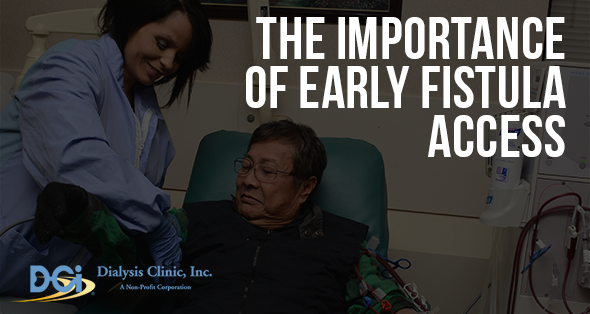The Importance of Early Fistula Access
Posted in Articles by Dialysis Clinic, Inc

An arterviovenous (AV) fistula is a connection between an artery and a vein, and is the preferred form of access for hemodialysis. Once the fistula is surgically created in your forearm, it becomes a natural part of the body. Once it is matured, it provides a steady blood flow that can last for many years.
Often a fistula takes about six months to fully develop. If an End Stage Renal Disease (ESRD) patient requires dialysis before his or her fistula has matured, then he or she is required to use a catheter to dialyze. This is considered an inferior form of access. Research indicates catheters often cause more complications for ESRD patients in the long-term. In addition, the United States Renal Data System states that “a significant number of patients do not receive adequate dialysis using this type [catheter] of vascular access.”
According to the American Society of Nephrology, 28-53% of fistulas fail to mature in time before a patient enters kidney failure. This means that when a patient goes into kidney failure, they will likely crash into a hospital and require a catheter to complete the life-saving dialysis treatment.
Channoah Williams, our care coordinator in Little Rock, Ark., explained that she prepares her patients for AV fistula surgery when they’re still in Stage 4 of CKD.
“I usually do referrals for an access surgery when their GFR [glomerular filtration rate] hits 20-percent,” said Williams. “It’s important to schedule that surgery before they enter Stage 5 of CKD, that way, the patient is able to begin dialysis immediately if their GFR drops too low, and without a hospital start-up or foreign object [such as a catheter] entering the body.”
“Many people don’t know what a fistula is,” she added. “I tell them it is key to reducing the risk of infection and completing the safest treatment.
